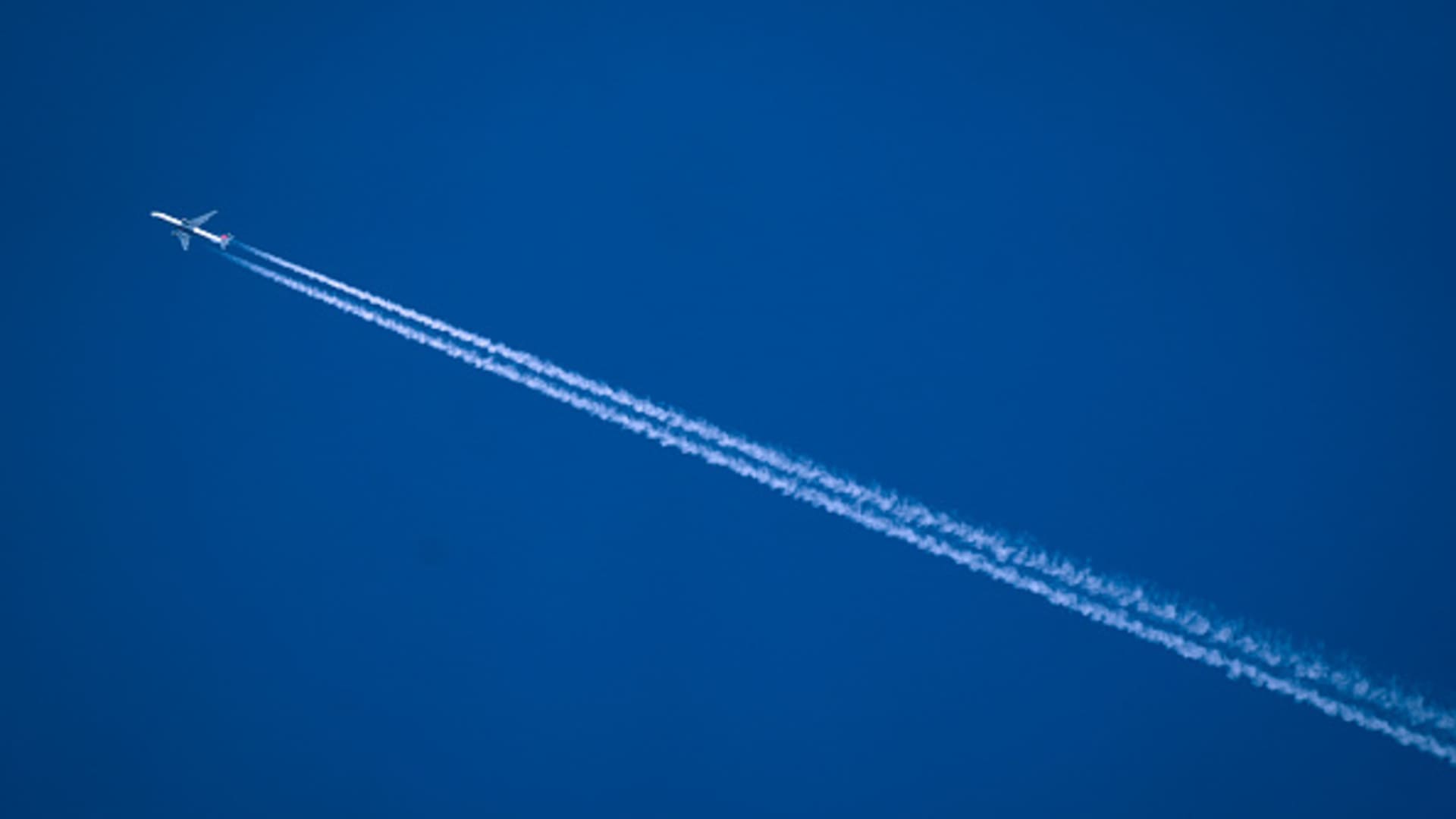A plane soaring above Northamptonshire, England. Turbulence, an uncomfortable aspect of air travel, can range from mild bumpiness to serious aircraft damage and passenger injuries.
Photo by Joe Giddens – Pa Images | Pa Images | Getty Images
Flight turbulence can be an uncomfortable experience for travelers, varying from mild bumps to severe cases of damaged planes and injured passengers. With millions of people embarking on summer vacations, a recent study conducted by researchers in England offers challenging yet crucial insights.
The analysis, published in Geophysical Research Letters in June, reveals the increasing prevalence of clear-air turbulence (CAT) in specific regions worldwide between 1979 and 2020. Clear-air turbulence, related to wind shear, poses a unique challenge for pilots as it is difficult to predict and can occur without warning. The World Meteorological Organization explains that CAT often occurs in the absence of clouds, making it visually undetectable.
The University of Reading, in its accompanying announcement for the report’s release, highlights some key findings. Over the North Atlantic, one of the world’s busiest flight routes, the annual duration of severe turbulence increased by 55% from 17.7 hours in 1979 to 27.4 hours in 2020. Moderate turbulence saw a rise from 70.0 to 96.1 hours, while light turbulence increased from 466.5 to 546.8 hours. The university attributes these changes to warmer air resulting from carbon dioxide emissions, leading to increased windshear in jet streams and the strengthening of clear-air turbulence globally.
The study’s authors state that their research provides the most compelling evidence yet that CAT has increased over the past four decades, consistent with the expected impact of climate change.
Aircraft passengers are required to fasten their seatbelts when the sign is illuminated and advised to keep them secured for the duration of the flight.
Photo by Pedrojperez | Istock | Getty Images
Professor Paul Williams, an atmospheric science expert, and co-author of the study, explains that the increasing prevalence of turbulence does not necessarily mean planes are encountering clear-air turbulence 55% more often. Aircraft actively try to avoid turbulence and have become adept at doing so. However, there is indeed an overall increase in atmospheric turbulence.
Williams adds that it’s hard to imagine a 55% increase in atmospheric turbulence without planes experiencing it more frequently. He clarifies that the report analyzes atmospheric observations rather than direct measurements of turbulence on aircraft.
The Consequences of Turbulence
Severe turbulence can have various consequences. According to Williams, these can range from internal damage to the aircraft caused by objects and passengers colliding with the interior, typically the ceiling, to routine wear and tear, known as “fatigue” in engineering terms, on the plane.
In a statement released last month, Mark Prosser, a PhD researcher at the University of Reading and co-author of the study, emphasizes the financial implications of turbulence. He mentions that turbulence costs the airline industry $150–500 million annually in the United States alone, based on figures from the NCAR Research Applications Laboratory website. Prosser further explains that each additional minute spent in turbulence increases aircraft wear-and-tear and the risk of injuries to passengers and flight attendants.
Managing Turbulence
What can be done to mitigate or manage clear-air turbulence? Williams stresses the importance of improving turbulence forecasting, calling for further research into understanding the factors that cause turbulence and how to calculate it. He proposes investing in better turbulence forecasting research.
Regarding technology, there is potential for significant advancements in the coming years. Williams explains the concept of LIDAR, a related technology to radar that uses ultraviolet light and lasers. This technology can detect invisible clear-air turbulence ahead of the aircraft. Although LIDAR is currently expensive and bulky, Williams suggests that as it becomes more affordable and compact, it could potentially be retrofitted into aircraft, revolutionizing the industry.
‘Keep Your Seatbelt Fastened’
Will turbulence worsen in the future? Williams states that it depends on human emissions. Each additional one degree Celsius of warming results in increased turbulence. Williams believes that unless significant action is taken, turbulence is expected to increase in the coming decades. However, he reassures passengers that severe turbulence is quite rare, with only 0.1% of the atmosphere at 40,000 feet experiencing it. Williams advises passengers to keep their seatbelts fastened in case they encounter that small fraction of the atmosphere with turbulence.
Denial of responsibility! VigourTimes is an automatic aggregator of Global media. In each content, the hyperlink to the primary source is specified. All trademarks belong to their rightful owners, and all materials to their authors. For any complaint, please reach us at – [email protected]. We will take necessary action within 24 hours.


